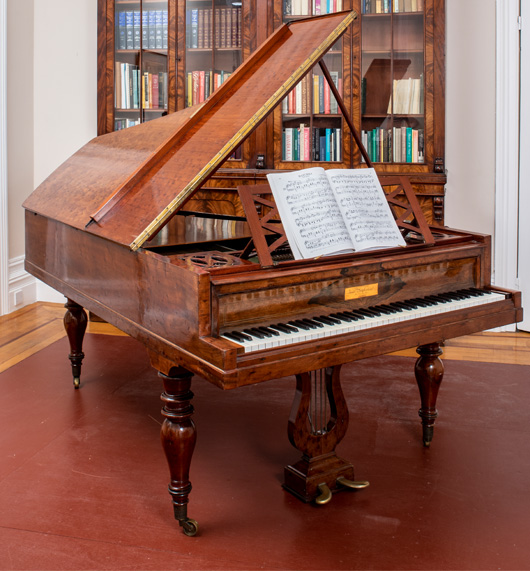Grand Piano by Ignaz Pleyel, Paris, 1842
Compass: CC - g''''
English grand action.
Pedals for una corda / due corde and dampers..
Compass: CC - g''''
English grand action.
Pedals for una corda / due corde and dampers..

Ignaz Pleyel and Muzio Clementi share many similarities: they were roughly contemporary in age, both were composers and both entered music publishing and piano building around the beginning of the 19th century. Such an active union between pianists and the piano building trade no doubt helped to steer the course of developments, as well as lending, perhaps, a useful marketing advantage. Similar to the model built by Pleyel in 1839 and owned by Frederick Chopin, this instrument possesses a variation of the English grand action and has two pedals for una corda / due corde and damper-lift. A composite framing system in iron reinforces the case of the instrument against the tension of the strings and a wooden ‘shade’ lies over the soundboard and strings to smooth the sound produced. An ingenious system of roller agraffes ensures that the overwound bass strings are not damaged during tuning and reflects increasing efforts to improve the pitch and tuning stability of pianos. The dampers are very efficient compared with earlier instruments and perhaps represent a changing aesthetic; certainly, the increased sustaining power of pianos of this period required more efficient and immediate damping. The case of the instrument is veneered in an unusual variety of mahogany and its overall appearance accords with the austere taste of the early 1840s when expanses of figured wood seem to have been preferred over inlaid work and extraneous ornamentation.
There's nothing remarkable about it. All one has to do is hit the right keys at the right time and the instrument plays itself
Johann Sebastian Bach